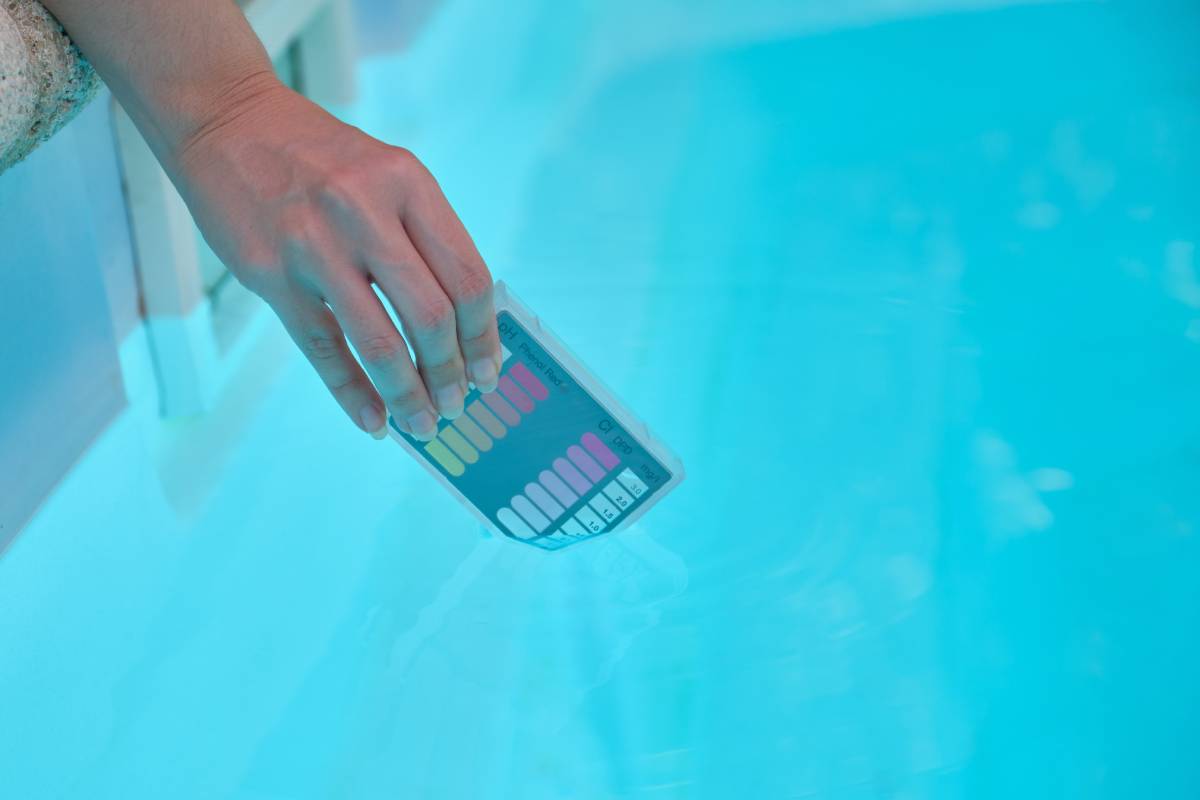Keeping your pool ready for a splash is all about that chemistry magic. It’s not just about scooping out leaves and running the filter. You’ve gotta juggle the pH, chlorine, and especially the total alkalinity to make sure the water’s just right.
We’re diving into the deep end to see why total alkalinity is a big deal, what messes with it, and if shocking your pool shakes things up. Get the scoop on these pool secrets, and you’ll be the pool-care champ, guaranteeing everyone a good time in the water.
More interesting article:
- Health vs. air pollution: How to maintain air quality while exercising?
- How can I become a firefighter in Australia? How much does a firefighter make in Australia?
Pool’s total alkalinity refers to the measure of various alkaline substances dissolved in the water of a swimming pool. It’s a crucial aspect of pool water chemistry, playing a key role in maintaining the water’s pH level and overall balance. Understanding total alkalinity is essential for keeping your pool water clean, clear, and comfortable for swimmers.
Imagine your pool as a delicate ecosystem where balance is everything. Total alkalinity is like the stabilizer, helping to maintain the pH level within the optimal range. pH measures how acidic or basic the water is, with a scale from 0 to 14. A pH of 7 is neutral, while anything below 7 is acidic, and above 7 is basic (alkaline).

Total alkalinity acts as a buffer against pH changes, preventing sudden spikes or drops that can lead to discomfort for swimmers and damage to pool equipment. It helps to stabilize the pH level, keeping it in the recommended range of 7.2 to 7.6 for most pools. Without proper total alkalinity levels, pH fluctuations can occur more easily, making it harder to maintain a comfortable swimming environment.
To measure total alkalinity, you use a test kit specifically designed for pools. The results are typically expressed in parts per million (ppm). The ideal range for total alkalinity is generally between 80 to 120 ppm, although this can vary depending on factors like the type of pool and local water conditions.
Maintaining the correct total alkalinity level involves periodic testing and adjustment. If the total alkalinity is too low, it can lead to pH instability and corrosion of pool surfaces and equipment. On the other hand, if it’s too high, it can cause cloudiness, scale formation, and difficulty in adjusting the pH.
To adjust total alkalinity, you can use chemicals like sodium bicarbonate (baking soda) to raise it or muriatic acid to lower it. However, it’s essential to make gradual adjustments and retest to avoid overshooting the target range.
In summary, total alkalinity is a vital aspect of pool water chemistry that helps maintain pH stability and overall water balance. By keeping total alkalinity within the recommended range, you can ensure a comfortable and safe swimming environment for everyone to enjoy. Regular testing and adjustment are key to achieving and maintaining optimal total alkalinity levels in your pool.

What causes high or low alkalinity in pools?
High or low alkalinity in pools can be influenced by various factors, including:
- Source Water: The water you fill your pool with can have inherent alkalinity levels. If your source water has high alkalinity, it will contribute to higher levels in your pool.
- Chemical Additions: The chemicals you use to treat your pool can impact alkalinity levels. For example, adding sodium bicarbonate (baking soda) raises alkalinity, while using muriatic acid or sodium bisulfate to adjust pH can lower alkalinity.
- Carbon Dioxide (CO2) Levels: CO2 in the air can dissolve into pool water, forming carbonic acid. This acid can lower alkalinity over time as it reacts with alkaline substances in the water.
- Acid Rain or Acidic Runoff: If your pool is exposed to acid rain or receives runoff from areas with acidic soil, it can contribute to lowering alkalinity.
- Organic Contaminants: Organic matter such as leaves, grass, and algae can introduce acidic compounds into the pool water as they decompose, potentially lowering alkalinity.
- pH Fluctuations: pH and alkalinity are closely related, with alkalinity acting as a buffer against pH changes. However, if pH levels fluctuate widely, it can impact alkalinity levels over time.
- Evaporation and Dilution: As water evaporates from the pool, it leaves behind dissolved minerals and salts, which can increase alkalinity levels if the pool water isn’t regularly topped up with fresh water.
- Swimmer Load: The number of swimmers and their activities can influence alkalinity levels. For example, bodily fluids like sweat and urine can introduce organic compounds that affect alkalinity.
To address high or low alkalinity levels, it’s essential to identify the underlying cause and take appropriate corrective actions. Regular testing and monitoring of alkalinity, along with pH and other water parameters, can help maintain balanced pool water chemistry for a safe and enjoyable swimming experience.















































